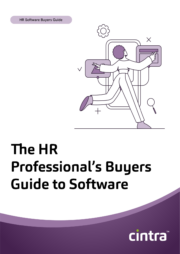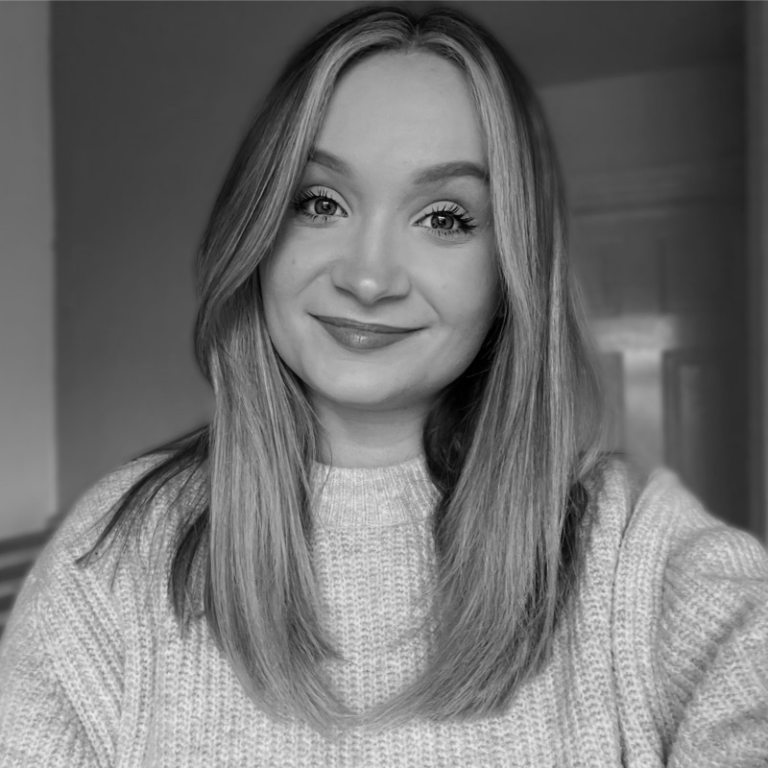There’s much to mull over when it comes to choosing the right HR software. Making the right choice is crucial, so we’ll help you unpack the subject and arrive at the best decision for you. This blog will help you find out what HR management software actually is, how it can benefit your organisation, features to look out for and all the other stuff you really should consider but perhaps don’t know. Yet. Without further ado, let’s get started.
HRIS, HRMS or HCM?
First up, you really need to know which of these systems will best meet your needs, because it’ll be the decider in choosing the right platform for your organisation.
Human Resources Information System (HRIS)
Say “adiós!” to outdated paper-based filing systems and pesky spreadsheets. Your team can stop tearing their hair out over lost documents, potential mistakes and a total lack of consistent data input.
HRIS software will store all that juicy HR info for you and keep it safe, secure and all in one place. We’re talking employee full names and their addresses, national insurance information and information about dependents. It does all of this with laser-like accuracy and at lightning speed. If the HRIS system allows employees self-service access, then your HR team will save more time and become even more efficient. That’s when change becomes effortless.
So what do you get with an HRIS?
Track your people: Your online employee rolodex contains contact info, job details and other personal information.
People directory: Keep up to speed with who’s who in every team. Usually, an effective people directory will include: full name, contact information, job title, date of employment, location and team. It can also include the employee’s interests and what project they’re currently working on.
Organisation chart: A clear map of your team is going to keep everyone clued up on roles and obligations, and to whom they report when a problem arises. A decent organisation chart also helps you to manage and spread workload evenly and to the right people.
Employee self-service: Engage your team by allowing them access to the HRIS to update their information, make use of benefits and check holiday entitlement.
Benefits management: Manage employee benefits admin, monitor compliance and allow employees to sign up online.
Absence Management: Report and track employee sickness and holiday . Keep an eye on potential loss of productivity and what it’s costing your organisation.
Reporting: Super-simple analytics and metrics to stay ahead of the curve.
Payroll integrations: Synchronise payroll with your HR management software for a seamless employee experience. And for your team? They can avoid re-entering data, avoid errors and create a definitive source of truth.
Human Resources Management System (HRMS)
Where HRIS deals more with information and records, HRMS takes it up a notch. It’s not just for storing and managing data but it’s designed to track and manage the processes that govern the employee lifecycle. Your HR people can use the data in the HRMS to see what’s going on across your organisation and what that might mean. An HRMS has all the functionality of an HRIS but comes with tons more strategic features.
And what do you get with an HRMS?
Recruiting: Make the hiring process a cinch by posting job ads, collecting online applications and tracking potential employees throughout the process.
Streamline onboarding: Onboarding’s a breeze with automated paperwork and the ability to track employee training and progress.
Manage Performance: Decide performance benchmarks, then measure employee performance against those criteria.
Reporting: Intelligent analytics and actionable insights on everything from employee performance to retention to training. The reporting tools in an HRMS are significantly more comprehensive than those in HRIS.
Just like the HRIS, the HRMS encourages employee engagement from the get-go. However, there is a distinct difference. An HRIS is all about holding the data you need, allowing you to keep on top of that engagement. An HRMS can promote engagement for you through all those bells and whistles we mentioned above.
So, why should you care about strategic features that an HRMS offers? Think of it as an investment. As your organisation inevitably grows, you’re going to want to hire more people. Engaging your new hires from the outset will create a culture where there’s lower turnover and a defined career trajectory will help set them on their way to a fulfilling role. For the comp
Human Capital Management (HCM)
HCM is where dream teams are made because it takes HRIS, and HRMS principles (hold the data, use the data, make it work for you) but adds some nifty little tools and widgets to make life even easier. HCM software gives you the tools to onboard, track and develop your “human capital” – aka a winning team- from day 1 all the way through to their final moment in your organisation. Forget the fussiness of doing it yourself – this is where processes are made efficient by automation. The bottom line with HCM? It’s the smartest way to do HR.
What features does an HCM offer?
Not only will it do what HRIS and HRMS do, but there’s much more:
Managing labour and workforce: Define budgets, monitor employee attendance, offer self-service to employees.
Admin: Manage personnel data, benefits and payroll administration. Allow employees to manage themselves with self-service.
Data: Hold data and documents – that’s a given. But you can also search intelligently for what you need.
Personnel recruitment and management: Job posting, hiring, onboarding and tracking of applicants.
Additional features to keep an eye out for
Depending on your goals and what you want the platform to do, there are a host of additional features you should look out for:
Employee surveys: Your employees want to be seen and heard, and giving them the chance to do this can provide you with real insights as to how to make your organisation a stellar place to work (and keep your amazing people!)
Real-time, continuous feedback: Give your people a chance to be the best they can be with continuous feedback. Regular contact and feedback with employees (in between appraisals) can increase employee engagement and set your employees up for unparalleled growth, which can play a vital part in workplace wellbeing.
1:1 check-ins: One-to-one meetings with managers and employees create a workplace where people come first. Using HR management software for 1:1 check-ins can help to keep employees and managers on the same page when it comes to expectations and following up on projects. In the longer term, they help to forge strong workplace relationships, and they help to retain your talent.
Performance management: Track your employees’ performance in a way that is measurable and consistent. Improve productivity by keeping your employees engaged and continuously improving.
Full suite of analytics: Analytics show you valuable data to support strategic decisions in your organisation. They can cover all areas of your business – from performance and productivity, to risk and compliance, to planning and financial drivers.
AI powered analytics: AI does the work of picking out and making sense of patterns in your employees’ data. This will help you to understand your people. And what does that mean? You can implement programs to improve employee productivity and foster positive relationships with your team.
Workflow automation: Automating workflow across the entire employee lifecycle irons out complex processes and allows for speedy, smooth execution. No effort required on your HR team’s part. Especially no pesky handling of manual requests and approvals.
Onboarding: Automate your onboarding process, create “to-do” lists for new recruits and let your data flow seamlessly between your payroll and HR software so you can easily onboard and offboard your employees.
HR compliance management: Forget the spreadsheets and feel the joy! This is where the software allows you to transform your clunky, manual systems into a slick, streamlined compliance machine. No more compliance stress-fest and you free up your team to do the things they really care about.
Employee self-service: Give your teams access to their own dashboard so they can report absence, view payroll, holiday leave entitlement, payslips, P60s and more. It creates a culture of employee engagement and will save your HR team precious time.
A few more things to consider
There are more things for you to consider when on a quest for the perfect HR management software. Here are some key questions to ask potential software providers when you’re on the quest for an HR management system:
Scalability and flexibility: Will your software support you and help as you grow? You don’t want a system that only works for today.
Data security: It’s worth researching your provider’s security standards and how they’ll keep your precious data safe. Is security inbuilt? Are they GDPR compliant? What are their policies and can you see documentary evidence of it? Are they ISO 27001 certified?
Future-readiness: Will your software provider be at the forefront of innovation in this rapidly-changing world? Will the technology evolve and keep up?
Access: How would you best like your team to access the software? Will it be cloud-based? Will it be mobile-ready?
Support: This one is BIG. What is customer support like? And the service-level agreement? Have you checked out their reviews? Are they easy to contact?
User-friendliness: How user-friendly is the software? It’s all very well that it’ll completely transform the way you do HR, but if it’s clunky and the team can’t use it – what’s the point?
Make your life easier, your employees happier and your productivity grow…
It sounds too good to be true. It isn’t. We promise that CintraHR is more than just HR software.
CintraHR simplifies and streamlines your entire employee lifecycle. From onboarding to performance to offboarding, you can automate your processes, build culture and create a better way to manage your people. Did we also mention we do payroll? Cintra Pay is your payroll software that’s everything you need to manage your payroll in-house with accuracy, efficiency, compliance and control.
We’ve got the tools that do the heavy lifting for you. So, you’re free to focus on what matters most. Like maximising efficiency, productivity and profit. And more importantly, your people.
Want to talk? Let us show you how our software can slash time spent on fiddly tasks and maximise time spent on doing the things you care about. Book a demo today.

HR Software Buyers Guide
Let’s walk through the decision making process—from understanding what HR software can do to getting down to what makes the best packages stand out from the crowd.
Download The ABC of Payroll!


